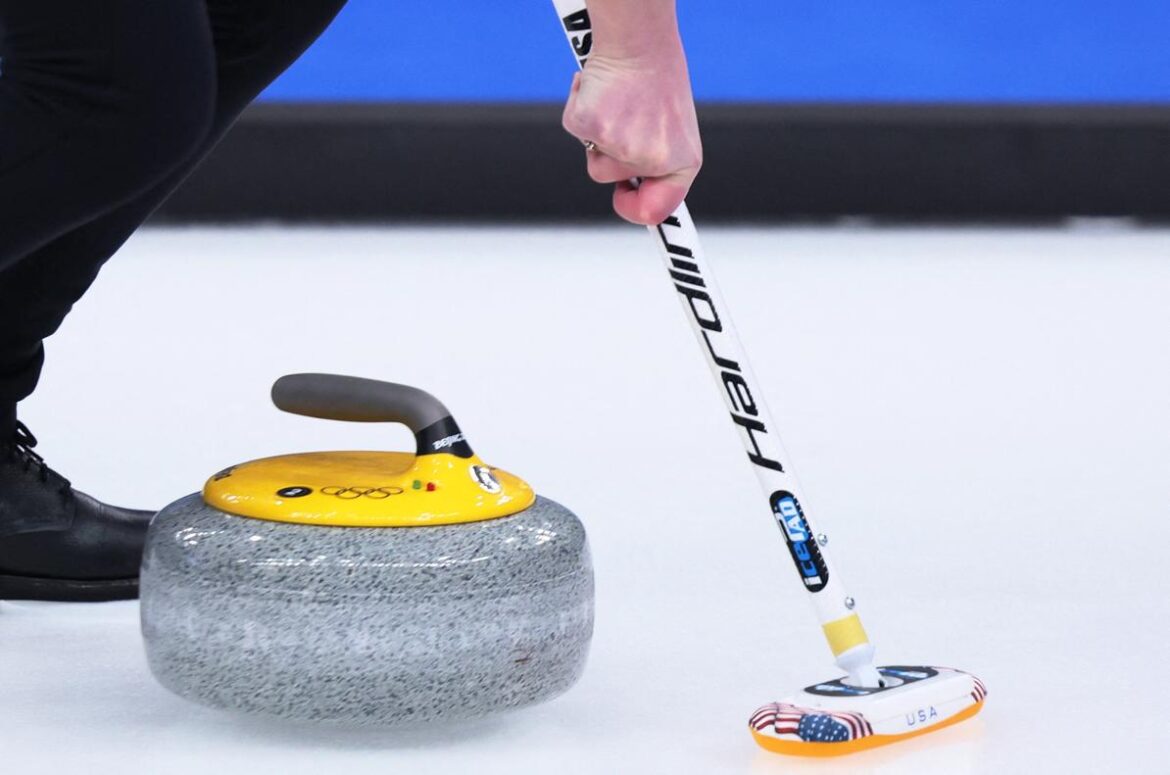DID YOU KNOW – For about ten years, a system of red and green lights has been integrated into the handle of the famous polished stones from Scotland.
Curling, a discipline unknown to the general public, opened the Winter Olympics in Beijing last Wednesday. This discipline, consisting of throwing with precision a polished granite stone through an ice corridor to get as close as possible to a circular target called a house, requires special equipment. Among other things, players need a very special pair of shoes. One of them is equipped with a thin teflon or stainless steel band allowing you to slide on the ice while the other, on the contrary, has an adhesive rubber sole to slow down the slide. The players also have a broom, which allows, after the stone has been thrown by his teammate, to sweep the ice in order to play with the rate of deceleration and get as close as possible to the target.
But the object which characterizes this discipline best of all is this round stone weighing 18.150 kg and with a diameter of 28 cm. It is a carved and polished piece of granite whith a handle allowing it to be rotated before being dropped on the ice. At the Olympic Games, the stone has the particularity of being equipped with a system of two-color diodes which light up after the throw.
Diodes to replace referees on the hog-line
The presence of this device reserved for very high level competitions dates back about ten years. “The diodes are connected to the ice at the hog-line, the line where the stone is dropped. If the diodes light up in green it means that it was thrown before the line and the throw is valid. On the other hand, if the red diodes light up, it means that the stone has been released after the line. This system takes over the role previously held by the referees who judged by eye, ”explains to Thierry Mercier, a former player of the France team and now coach of the Blues.
The use of such a device is reserved for such competitions as the World Championships or the Olympic Games. The ice rink must be equipped with a stone detection system with a chip integrated into the handle. Significant additional cost explains why the system has not been democratized in all competitions. The French team trains regularly with stones not equipped with diodes.
A set of 16 stones costs 10,000 euros
The curling practice requires a small initial investment for the purchase of 16 stones. We are talking about a set of stones whose price is around 10,000 euros, without the diode device. Karys of Scotland is recognized worldwide by all fans of this sport. It manufactures the best stones on the planet and has supplied the Olympic Games since the first edition in Chamonix in 1924. Each year, this manufacturer puts 40,000 stones on the market. They are polished with tin oxide extracted from a quarry located on a tiny island measuring 3.2 kilometers in circumference located on the west coast of Scotland, Ailsa Craig. It is on this rocky outcrop, which also looks like a large sea stone that this famous rare granite called ailsite is to be found. It has been the delight of all curlers since the mid-19th century.
4,091 total views, 2 views today



